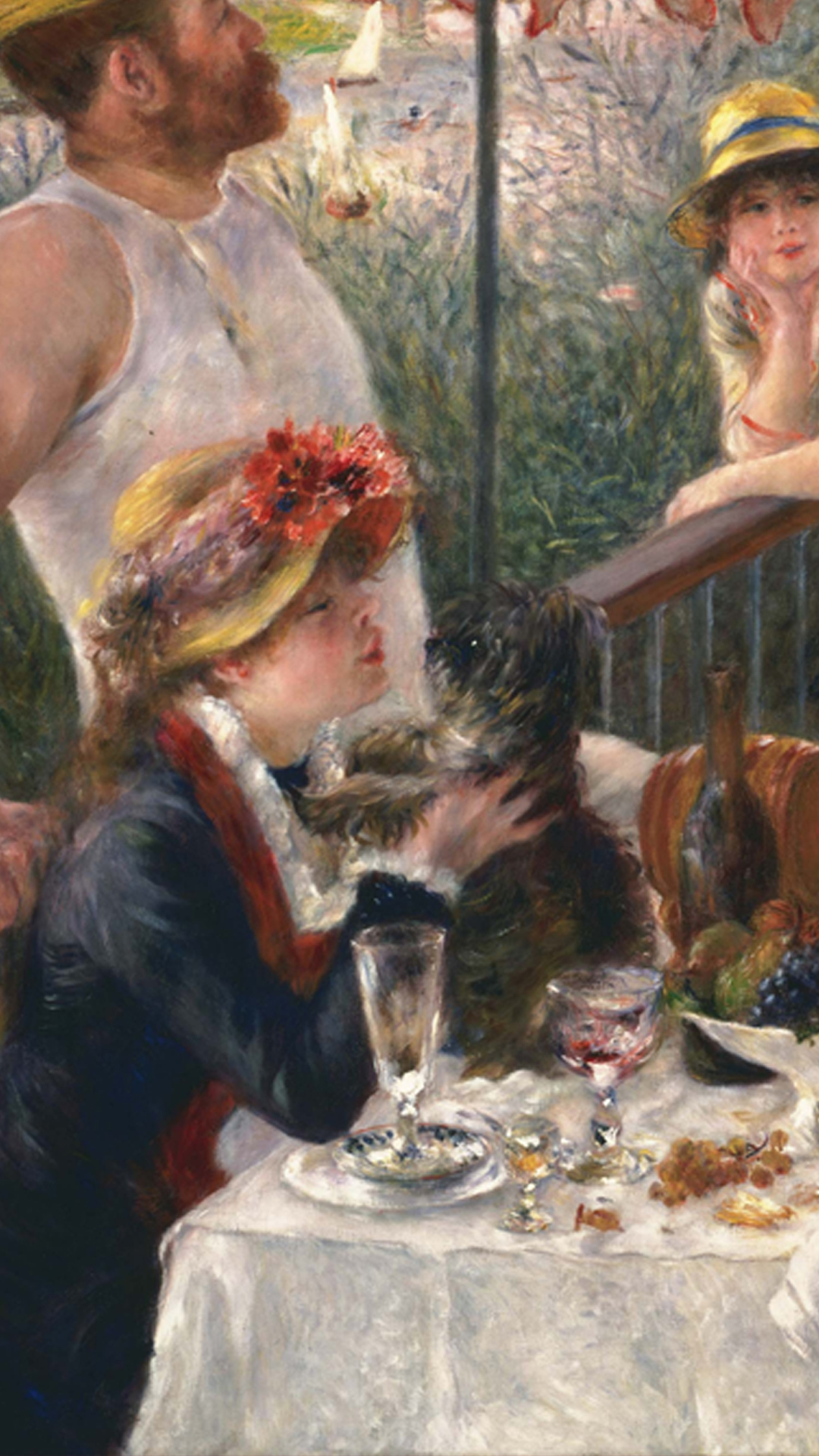This week is all about dining al fresco!
And here is one of the most famous and delicious luncheon scenes ever to be painted. Renoir’s Luncheon of the Boating Party.

Pierre-Auguste Renoir, Luncheon of the Boating Party, 1881, The Phillips Collection, Washington D.C.
It dates to 1881 and I suppose would be classified as an Impressionist work – it prioritises colour, it’s of a modern, everyday scene, it was mostly painted outdoors – he spent 16 months painting individual portraits in situ but then finished the whole thing off in the studio which wasn’t so Impressionist. It has to be said, however, that the Impressionists actually didn’t have a manifesto that they worked to.
The scene depicts a group of young people enjoying the tail end of what looks to have been a rather fabulous lunch. The location is a restaurant called Maison Fournaise which was closed in 1906 but with a rising interest in the Impressionist artists throughout the 20th century, there was a campaign to restore it. So you can go and dine there once again.
In the 1880s it was a popular hangout for rowers who would congregate there because you could access it via the river and artists, and actresses and bourgeois types; all of whom are represented here, in glorious 3D. Renoir wanted them all to be substantial, properly modelled and convincing, hence he spent time on them and he painted them in a different way to the background which is far more ‘impressionistic’, they are also almost life size.

Look at these figures; they’re so much sharper than the background because they’re painted with finer brushstrokes.
The objects on the table are less defined too – look at the way that the glasses are brilliantly depicted using light and shadow.
Luncheon of the Boating Party really was, and still is, considered Renoir’s masterpiece. It’s three genres rolled into one (still life, landscape and portraiture), and is full of interaction which gives it real dynamism. The interaction in terms of the composition was certainly staged as the composition works so well but it was also genuine as the people depicted where Renoir’s friends.
The guy leaning against the balcony is Alphonse Fournaise, Jr. and the lady is Alphonsine Fournaise; brother and sister and the children of parents with little imagination. They are also, of course, part of the family who own the restaurant.
The lady cooing at her terrier is Aline Charigot, Renoir’s future wife. You might notice that the dog is looking slightly surprised, and that’s because he’s not looking at the same person that he was originally! Aline replaces the original model who had her face scraped away when Renoir fell in love with the young seamstress and decided that she needed to be in the painting!
Opposite Aline is the artist Gustave Caillebotte and amidst other recognisable faces of the day is one that is in the centre but, unlike all of the other people depicted, not interacting at all. She’s completely in her own world. This is the actress Ellen Andrée who also modelled for Degas.
The painting became part of the collection of Durand-Ruel who was an art collector and the main patron of the impressionists but when he died in 1922 the work was bought by an American collector called Duncan Phillips who had founded Washington D.C.’s The Phillips Collection, America’s first museum of modern art. It’s still there. It went to a great home, Duncan Phillips LOVED the work. Legend has it that one bitchy fellow collector once commented to Phillips that ‘that’s ‘s the only Renoir you have, isn’t it?’ and Phillips replied, ‘It’s the only one I need.’
The video of this episode can be viewed here. To view the entire ‘Elevenses with Lynne’ archive, head to the Free Art Videos page.

Recent Comments